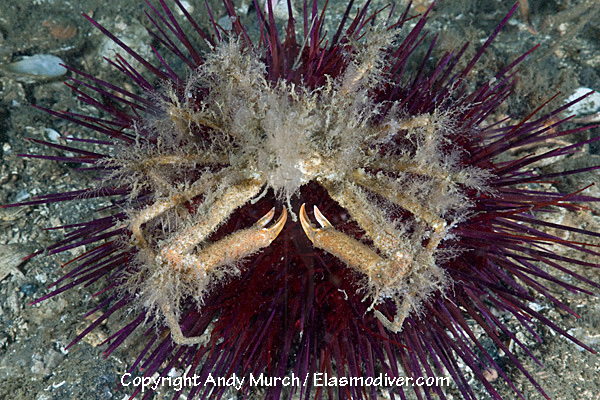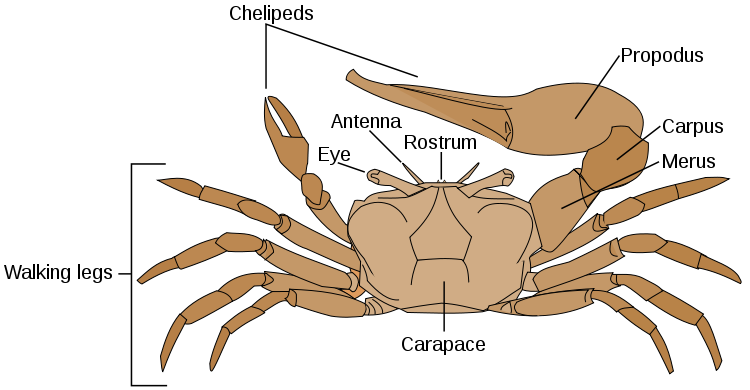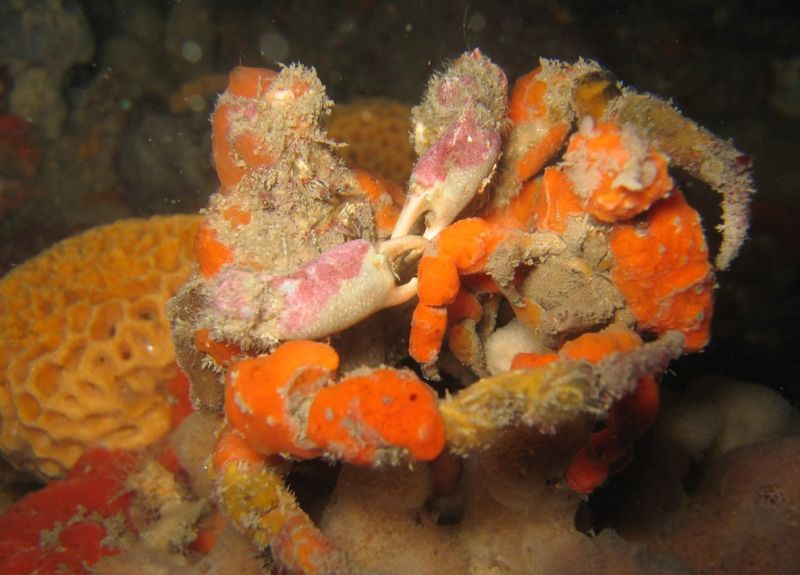
Adaptation

In most tidal waters algae, bryozoans, and
other small organisms are abundant.
More often than not, these become easy meals for larger,
more complex organisms. In the coastal regions from Northern
Alaska to California however, these species might play a
different role. This
is the habitat of Oregonia gracilis, a species of decorator crab which instead of
feasting on these smaller creatures, they uses them to protect
itself from predators(Berke
and Woodin 2009).

The graceful decorator crab have two front claws which are called pincher as well as chelipeds. Chelipeds are very strong and sharp which helps them when dealing with tough food there breaking through such as smaller crabs and clams.These are very important to crabs because it allows them to tear through the food they acheive after huning for them. Also they are used for protection against predators.
Carapace
Oregonia gracilis have a
very strong outer shell called carapace which is made up
chitin. This is used for
protection from other predators as well as their
environment. There carapace is full of hooks which are
used to attach resources and organism to their shell for
camouflage. When the crabs start to grow they go under
a process called molting. During this they remove all
of their organisms and resources and set them aside.
The crabs are extremely vulnerable during this time, but it
does not take long for their hard shells to form. The
graceful decorator crabs are very good at recycling, all of
the organisms they set aside they reuse them onto their new
shell.
Not exerting much energy throughout their lifetimes,
Graceful decorator crabs use an open circulatory system.
This is due to the fact that from conserving as much
energy as they do, their bodies require less oxygen to live.
Due to most of their food being easily attainable
either on or near them, these crabs have become well known
for their sedentary lifestyle.
Not exerting much energy throughout their lifetimes, Graceful decorator crabs use an open circulatory system. This is due to the fact that from conserving as much energy as they do, their bodies require less oxygen to live. Due to most of their food being easily attainable either on or near them, these crabs have become well known for their sedentary lifestyle.
 One
of the most recognizable attributes of the Graceful
Decorator Crabs is the tendency and ingenuity in which they
camouflage themselves from predators (Odierno 2013).
The crabs have hooked setae which function as
anchoring points for their clever camouflage.
Employing the use of a glue-like substance secreted
through their mouths,
Oregonia gracilis attach surrounding resources and even
living organisms such as sponges to their hooks.
Here is a video showing this:
Graceful decorator crab camouflaging itself. This
process is used to help the Graceful Decorator Crab to
decrease predation by disguising themselves through physical
and chemical deterrence (Berke and Woodin 2009).
One
of the most recognizable attributes of the Graceful
Decorator Crabs is the tendency and ingenuity in which they
camouflage themselves from predators (Odierno 2013).
The crabs have hooked setae which function as
anchoring points for their clever camouflage.
Employing the use of a glue-like substance secreted
through their mouths,
Oregonia gracilis attach surrounding resources and even
living organisms such as sponges to their hooks.
Here is a video showing this:
Graceful decorator crab camouflaging itself. This
process is used to help the Graceful Decorator Crab to
decrease predation by disguising themselves through physical
and chemical deterrence (Berke and Woodin 2009).
Male VS Female
Males and females are able to be differentiated by the different qualities displayed between them. First of all, the males have far less hook setae covering their bodies. This causes a decrease in the ability to decorate themselves whereas the juveniles and adult females bear more setae, enabling them to completely conceal their shells (Berke and Woodin 2009). Size also plays a role in the amount of decoration that appears on Oregonia gracilis because the larger they are the more rows setae they are able possess (Hein 2013).
Juveniles to Adult
In a study performed at Baylor
University, they found juveniles would rather decorate with
unknown debris found free floating rather than applying
sponges and other organisms.
They hypothesized that the juvenile Graceful
Decorator Crabs may have weak chelae, the larger pincer-like
claws, and this debris is
easier to attach to the body than larger fragments (Hein
2013). As for
the mature Oregonia
gracilis, it was found that they preferred sponges over
algae and bryozoans.
From this observation, they inferred that sponges are
easily applied leaving the crab vulnerable for a shorter
duration of time.
Their second hypothesis was that the sponges used
presented better physical and chemical protection than that
offered by red algae or bryozoans (Odierno 2013).
These rare creatures have adapted unique traits to
help them survive in their demanding shallow water habitat.
By allowing themselves the ability to camouflage with
objects from their environment, they are able to move and
adapt their disguises accordingly.
Through these unique adaptations, Graceful Decorator
Crabs have been able to survive and evolve for millions of
years and continue doing so.
